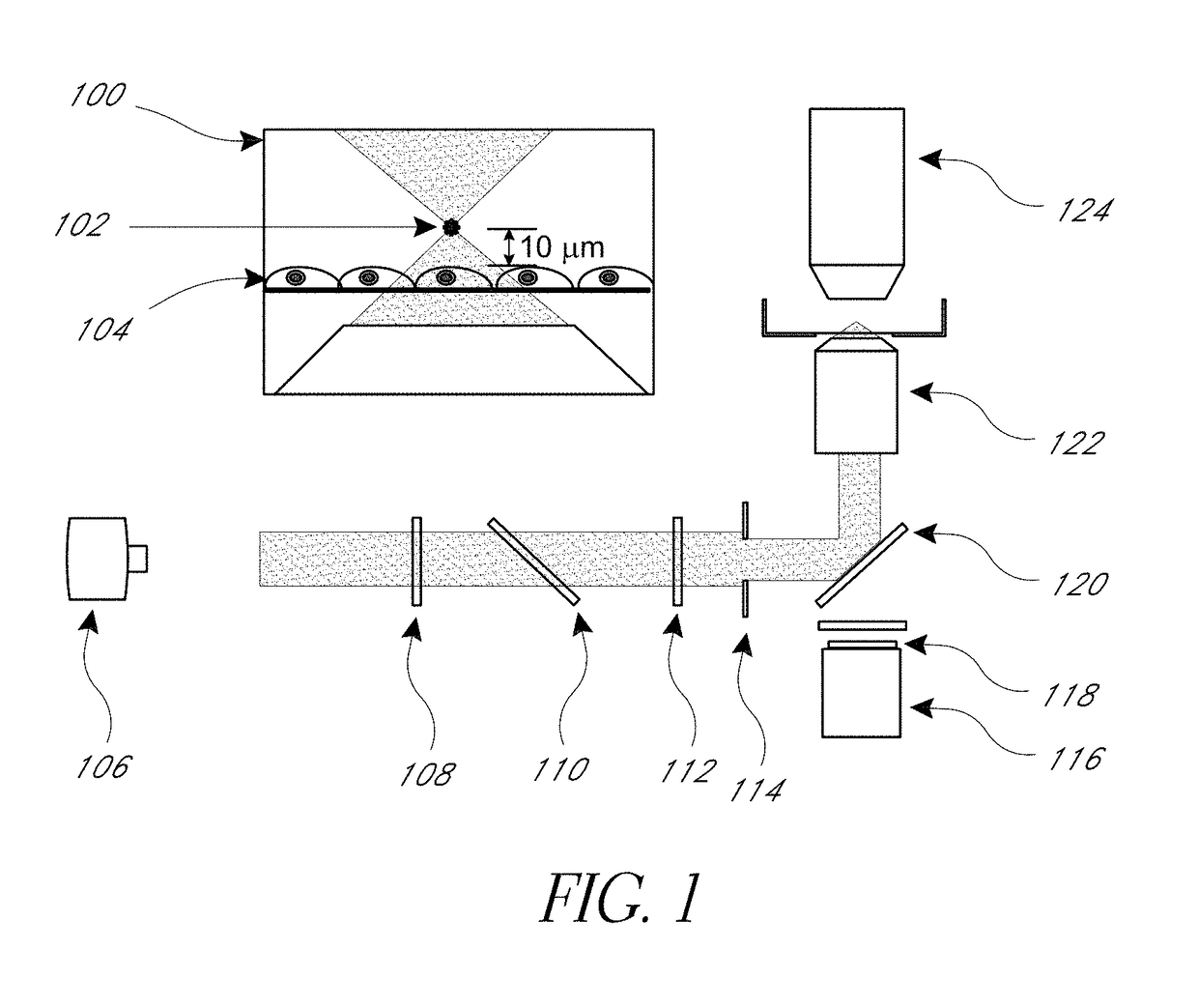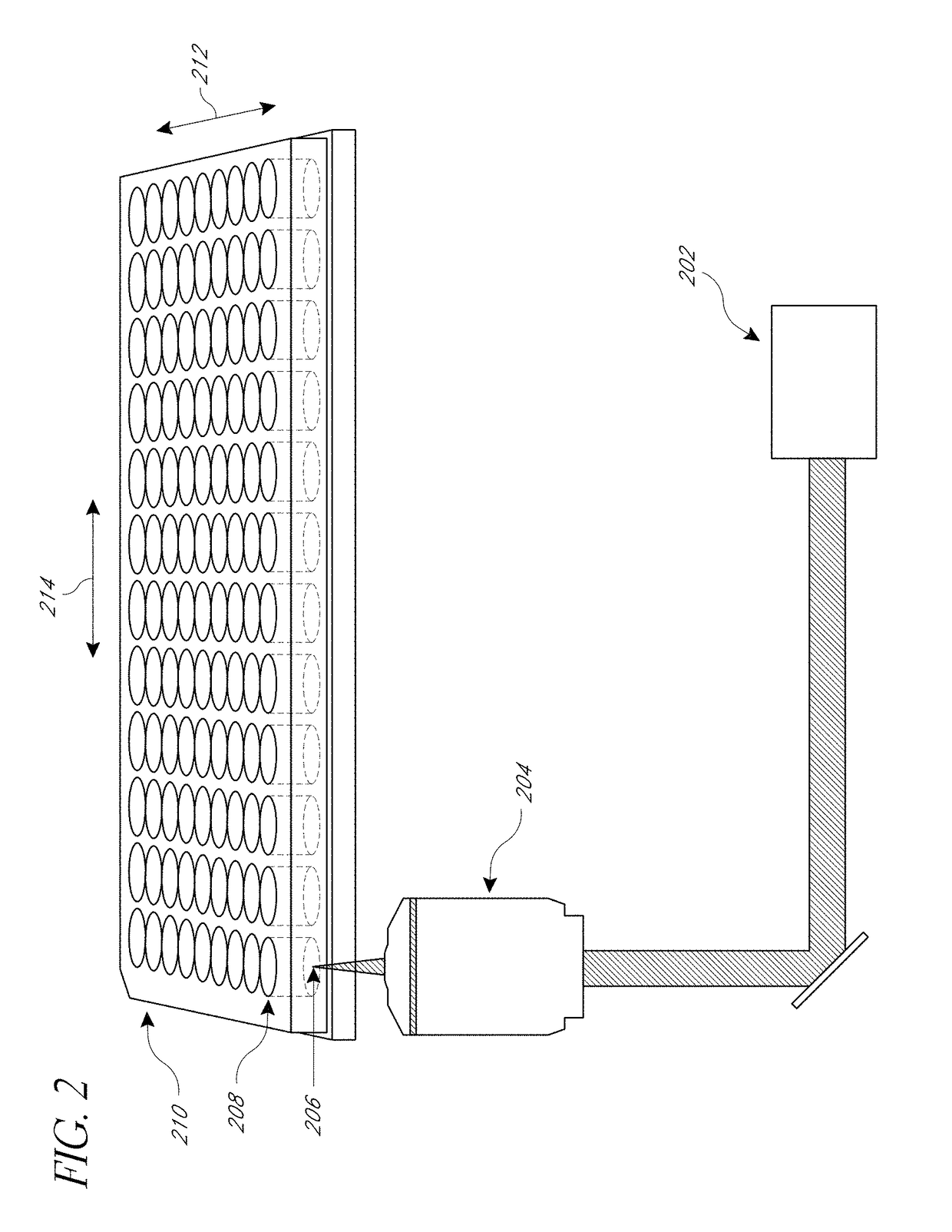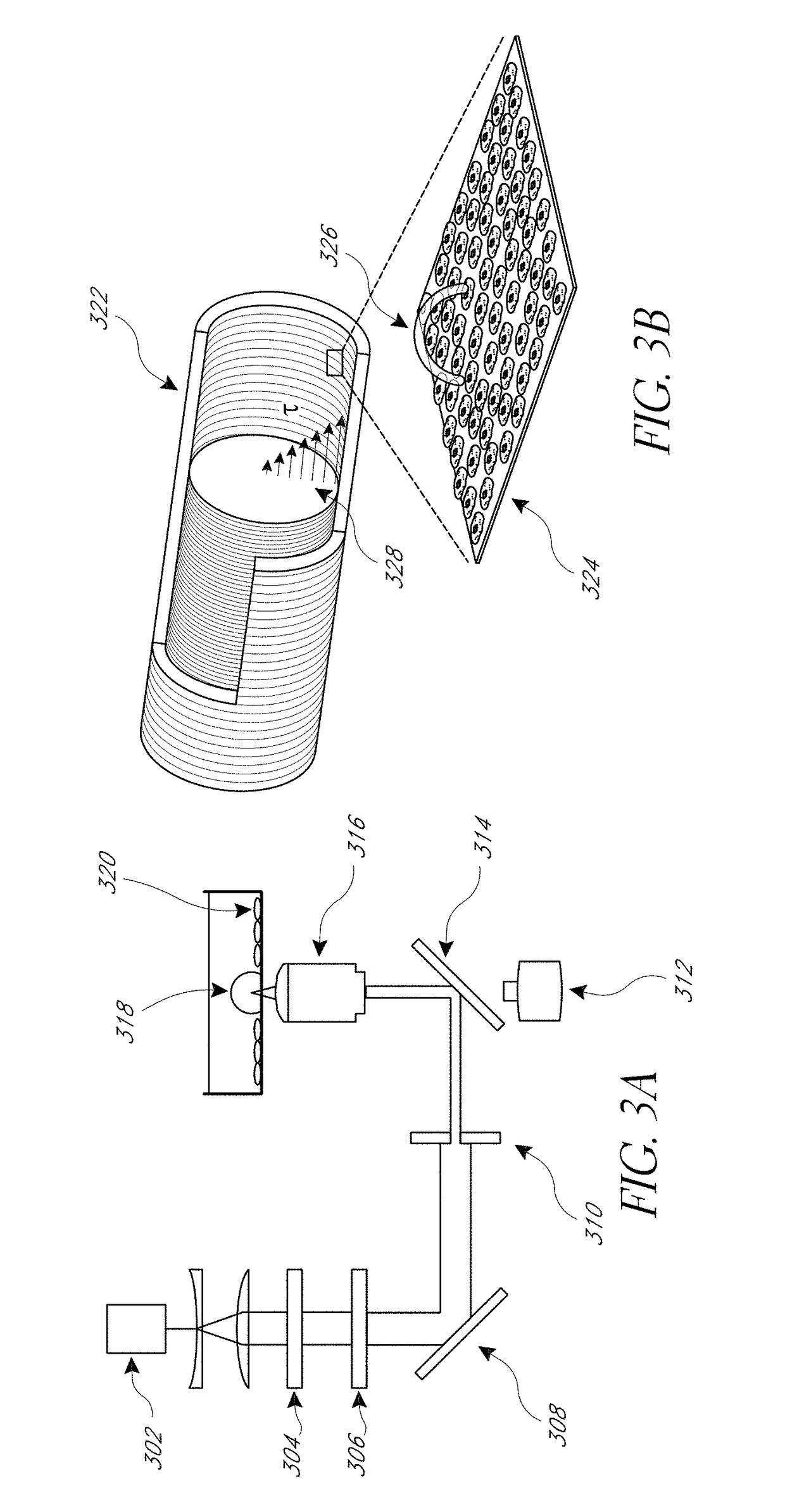Mechanical stress response analysis of cells and tissues
a cell and tissue technology, applied in the field of mechanical stress response analysis of cells and tissues, can solve the problems of low throughput, time-consuming and difficult to analyze, and use a very limited number of cells per day
- Summary
- Abstract
- Description
- Claims
- Application Information
AI Technical Summary
Benefits of technology
Problems solved by technology
Method used
Image
Examples
examples
[0082]μCBs were created using the λ=532 nm emission of a Q-switched pulsed microchip laser (PNG-M03012, Teem Photonics) emitting pulses 500 ps in duration. The laser beam is expanded and collimated and the pulse energy of the collimated beam is controlled using the combination of a λ / 2 waveplate and polarizing beam splitter. The central portion of the beam is selected by an iris and directed into an inverted microscope (Olympus IX-81) by a dichroic (Chroma ZT532NBDC) mirror. The beam is then focused by a 20×, 0.45 numerical aperture microscope objective (Olympus IX-81). The laser microbeam was focused approximately 10 μm above the cell monolayer.
[0083]Fluorescence microscopy was performed on the same inverted microscope using epifluorescence illumination from a mercury short-arc lamp (X-Cite 120PC, Lumen Dynamics). The filter cube containing a 480 / 40 excitation, 535 / 50 emission, and 505 LP dichroic filters (Chroma) which were chosen based on the fluorescent probe spe...
PUM
| Property | Measurement | Unit |
|---|---|---|
| diameter | aaaaa | aaaaa |
| diameter | aaaaa | aaaaa |
| diameter | aaaaa | aaaaa |
Abstract
Description
Claims
Application Information
 Login to View More
Login to View More - R&D
- Intellectual Property
- Life Sciences
- Materials
- Tech Scout
- Unparalleled Data Quality
- Higher Quality Content
- 60% Fewer Hallucinations
Browse by: Latest US Patents, China's latest patents, Technical Efficacy Thesaurus, Application Domain, Technology Topic, Popular Technical Reports.
© 2025 PatSnap. All rights reserved.Legal|Privacy policy|Modern Slavery Act Transparency Statement|Sitemap|About US| Contact US: help@patsnap.com



